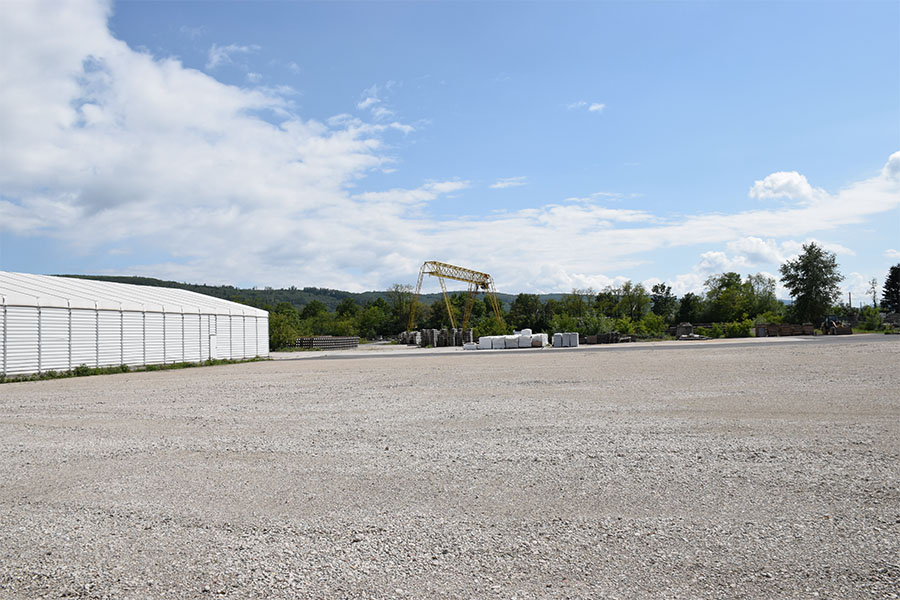Multilayer City
Ettlingen (DE) - Winner

TEAM DATA
Associates: Sabine Tastel (DE) – architect, urban planner, Björn Simon (DE), Jannik Mause (DE) – students in architecture, Fabius Kerstein (DE), Tim Pertl (DE), Tobias Trutzenberger (DE), Sabine Wittmann (DE), Milena Zampich (DE) – students in urban planning
Contributor: Nele Lesemann (DE) – student in urban planning
Tornerg 4a 22337 Hamburg
+49 1525 7245461
tim@ptl1.de
See the complete listing of portraits here
See the site here
TEAM PORTRAIT
VIDEO (by the team)
INTERVIEW
Click on the images to enlarge
1. How did you form the team for the competition?
After our B.A. degrees we had the ambition to do a self-organized project as an interdisciplinary team. The Europan 16 competition was perfect for us and our intention. So, we looked for urban planning and architecture students at our university who were interested in joining this project. Since we knew each other from previous courses, we assumed that working together in a team of seven master students plus one bachelor student plus docent could work well – as different expertise could be used.
2. How do you define the main issue of your project, and how did you answer on this session main topic, Living cities?
The main issue of our project was to connect a former secluded planning area to the citycentre and the west of Ettlingen. For our design concept we put a strong focus on the resilience and the sustainability of the new district. Therefore we have taken the new Leipzig Charter – with its green, fair and productive city – into account. These goals are reflected in the three different layers of our concept: Working is reconsidered with flexible designs and adaptable buildings, which is transmitted to our overall urban design. Green spaces are redesigned to be resilient by having different ways of water absorption and still be usable for leisure time. Different mobility and circulation systems contribute the whole functionality and ensure an exchange between the existing and new neighbourhoods. Through the concept of a circular city, working and living can be made sustainable. Furthermore, a green and blue infrastructure can be strengthened. Each conceptional layer comes in line with the other and completes our goals of a Multilayer City – our interpretation of living cities.
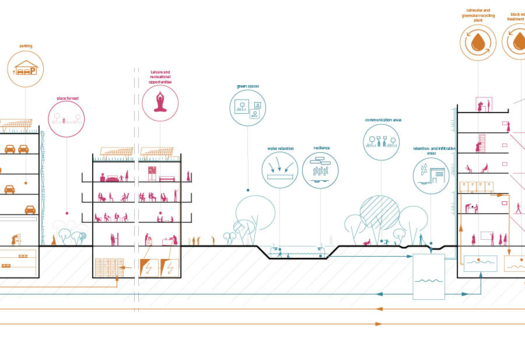
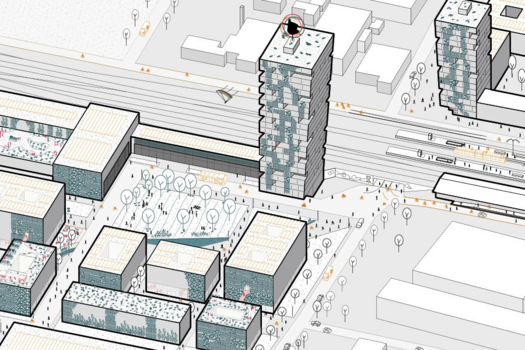
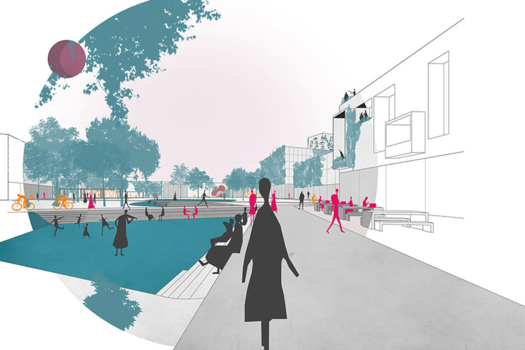
We detected three major topics:
1. Bringing nature back to the city Thinking about living or livable cities, an integration of nature into cities is essential. In case of the site in Ettlingen unsealing the ground is crucial since the city lies in one of Germanys hottest regions. It allows nature to return to the currently completely sealed area. With those and many more measures for instance good air quality and good rainwater management, lower temperatures can be ensured.
2. Life cycle of buildings According to the potential use, thus a conversion of existing buildings, the life cycle of buildings could be extended. For the same reason new buildings should be planned adaptable to different potential future uses.
3. Connection to the context and socially adjusted housing Inclusive vitalities are one of the main challenges which must be handled. Especially concerning the yet to be started development of residential buildings into social-housing in the south-east of the area. A gentle transformation of the competition area without an exclusive access to the area and its functions should be intended.
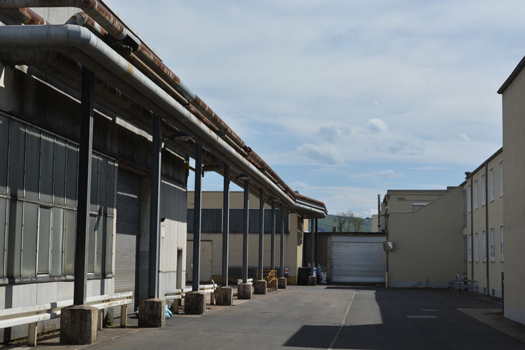
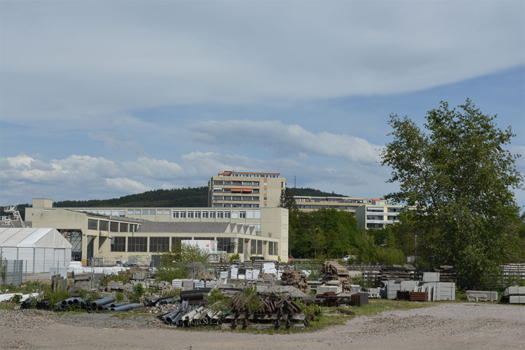
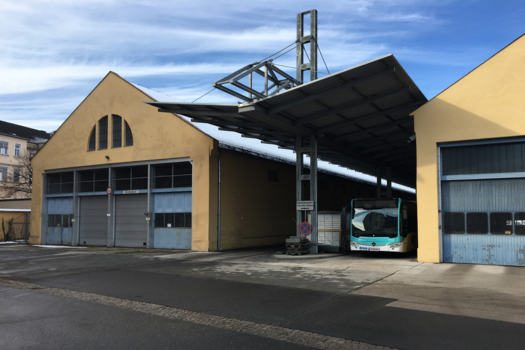
In the context of design projects at our university we have already dealt with inner-city brownfields in many ways. The main aim is usually to create a mixed used area with a focus of residential housing, by taking noise protection, sustainability, resilience and sufficiency into account. So, there are some parallel issues to the initial situation in Ettlingen. But for us, it was a new situation to deal with the contemporary redevelopment of a former industrial area and its specific structure and furthermore the abolishment of existing disconnections and borders. To find the right solution we were inspired by different international projects especially in the topics of roof landscapes, sponge cities and circulatory systems.
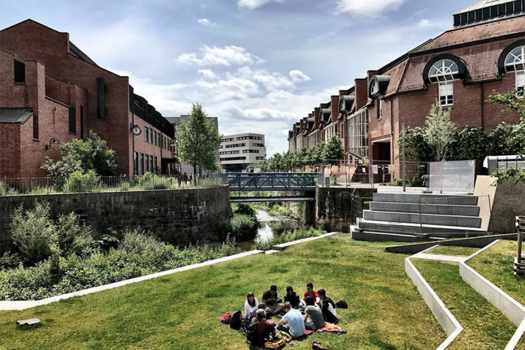
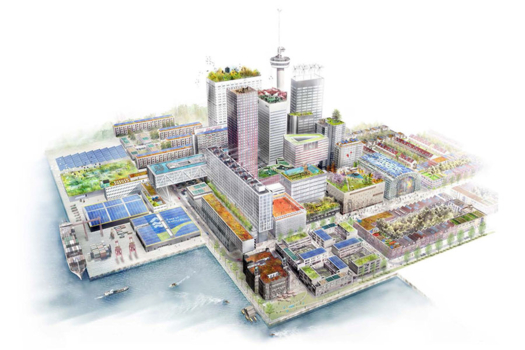
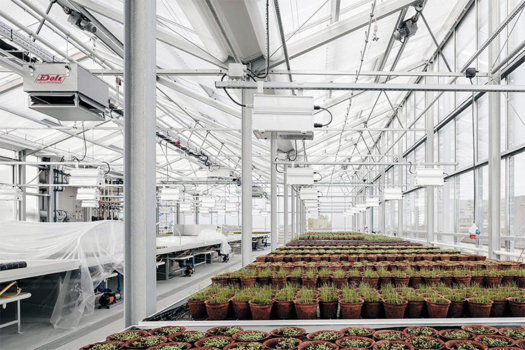
We think a participative process is indispensable in the context of an urban design project. This concerns the involvement of the citizens as well as the involvement of different disciplines. This participation also becomes clear in our concepts: Within the concept of New-Work, the spatial and structural needs of each person are determined through a specific survey of the new companies (by means of a questionnaire). Thus, a constant adaptation of their needs can be made. Another example is the concept of the circular city. The concept picks up on existing ecological and economical circuits in Ettlingen and integrates them into the urban design. These must be discussed with local stakeholders beforehand. To enable an adaptable implementation of our design, we divided the process into individual constructional and temporal steps.
6. Is it the first time you have been awarded a prize at Europan? How could this help you in your professional career?
Yes, this is the first time we have received an Europan award. It was also the first time we have done a competition in this constellation. We are happy to see that our ideas have been appreciated and that our work has the potential to be implemented. The competition showed us in which subject we would like to specialize in the future and we have the ambition to deepen our knowledge.
TEAM IDENTITY
Office: -
Function: architecture, urban planning
Average age of the associates: 26 years old
Does your team share a common workplace? if yes, give us a short description:
Due to Covid restrictions we weren`t allowed to work in our studios at university. So we rented a small office in the city centre of Kassel (Germany) for 8 people to benefit from face-to-face communication and livable discussions.




